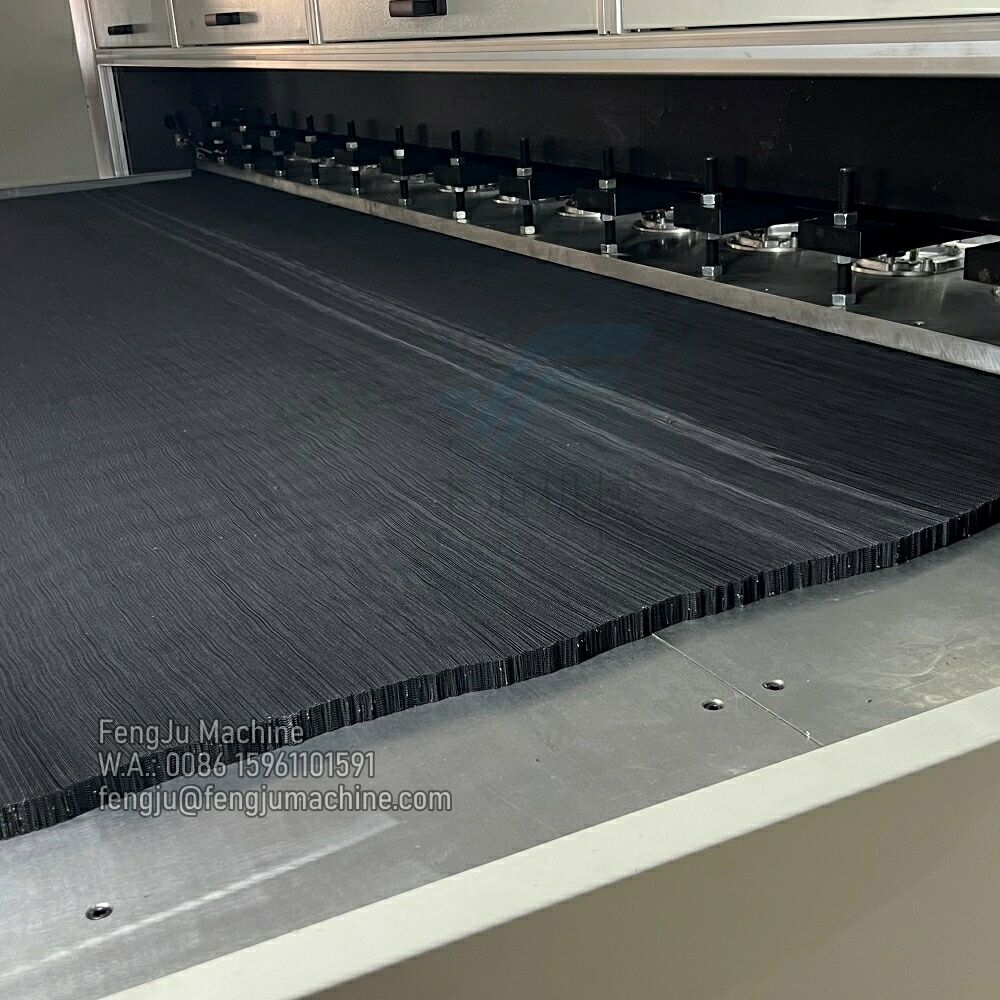Understanding Modern Pleating Machine Precision Technologies
The evolution of pleating machinery has revolutionized the textile and filtration industries, with accuracy standing as the cornerstone of quality production. Today's pleating machines incorporate sophisticated features that ensure precise, consistent, and reliable pleating results across various materials. Understanding these critical accuracy-enhancing features is essential for manufacturers seeking to optimize their production processes and maintain competitive edge in the market.
Core Components for Enhanced Pleating Precision
Advanced Servo Motor Systems
At the heart of modern pleating machine accuracy lies the servo motor system. These sophisticated motors provide precise control over the material feed rate and blade movements, ensuring consistent pleat depth and spacing. The integration of digital servo controls allows for microscopic adjustments, maintaining accuracy within fractions of a millimeter. This level of precision was unthinkable in earlier mechanical systems.
Modern servo motors also feature dynamic torque compensation, automatically adjusting force application based on material resistance and thickness variations. This adaptive capability ensures uniform pleating even when processing materials with slight irregularities or varying densities.
Digital Measurement and Calibration Tools
State-of-the-art pleating machines incorporate advanced digital measurement systems that continuously monitor pleat formation. High-resolution sensors track material movement and position, while real-time feedback loops make instantaneous corrections to maintain specified parameters. These systems typically include laser measurement devices that verify pleat depth and spacing with exceptional accuracy.
Calibration tools have evolved to include self-diagnostic capabilities, automatically detecting and compensating for any mechanical wear or alignment issues that might affect pleating precision. This proactive approach to maintenance helps prevent accuracy drift over time.
Material Handling Innovations for Consistent Results
Tension Control Systems
Advanced tension control mechanisms represent a crucial feature in maintaining pleating machine accuracy. These systems employ multiple sensors and adjustment points to ensure uniform material tension throughout the pleating process. Proper tension control prevents material stretching or bunching, which can lead to irregular pleat formation.
Modern machines utilize electronic tension sensors that provide continuous feedback to the control system, allowing for real-time adjustments. This dynamic tension management is particularly important when processing delicate or elastic materials that require careful handling to maintain dimensional stability.
Precision Feed Mechanisms
The material feed system plays a vital role in pleating accuracy. Contemporary machines feature precision-engineered feed rollers with specialized coatings that provide optimal grip without damaging the material. These mechanisms often incorporate micro-stepped movement control, allowing for extremely precise material advancement between pleat formations.
Advanced feed systems also include automatic material alignment features that ensure the substrate remains properly positioned throughout the pleating process. This prevents skewing or misalignment that could compromise pleat uniformity.

Software Integration and Control Systems
Intelligent Programming Interfaces
Modern pleating machines leverage sophisticated software interfaces that allow operators to program and store detailed pleating parameters. These systems provide intuitive controls for adjusting pleat depth, spacing, and patterns while maintaining strict accuracy standards. The software also enables the creation of custom pleating profiles for different materials and applications.
Machine learning algorithms increasingly play a role in optimizing pleating parameters, analyzing historical data to suggest improvements and predict potential accuracy issues before they occur. This predictive capability helps maintain consistent quality while reducing setup time and material waste.
Real-time Monitoring and Adjustment
Advanced monitoring systems provide continuous oversight of the pleating process, displaying real-time data on pleat formation, material feed rates, and overall machine performance. These systems can detect minute variations from specified parameters and initiate immediate corrections to maintain accuracy standards.
Integration with quality control systems allows for automatic documentation of pleating accuracy metrics, creating detailed production records that help maintain consistency across multiple production runs.
Maintenance Features for Sustained Accuracy
Automated Calibration Systems
To maintain long-term pleating machine accuracy, modern equipment includes automated calibration features that regularly verify and adjust critical parameters. These systems can perform routine accuracy checks and make necessary adjustments without extensive operator intervention, ensuring consistent performance over time.
Predictive maintenance algorithms monitor component wear and performance metrics, alerting operators when maintenance is needed to prevent accuracy degradation. This proactive approach helps maintain optimal pleating precision while minimizing unplanned downtime.
Precision Component Design
The physical components of modern pleating machines are engineered with accuracy in mind. High-precision bearings, hardened wear surfaces, and temperature-compensated materials ensure mechanical stability and consistent operation. These components are often modular in design, allowing for easy replacement when wear eventually occurs.
Advanced materials and coating technologies extend component life while maintaining precise tolerances, reducing the frequency of adjustments needed to maintain accuracy standards.
Frequently Asked Questions
How often should pleating machine accuracy be verified?
Regular accuracy verification should be performed at the start of each production shift and after material changes. Additionally, comprehensive calibration checks should be conducted weekly, with full system calibration recommended monthly or as specified by the manufacturer's guidelines.
What role does temperature control play in pleating accuracy?
Temperature control is crucial for maintaining pleating accuracy as it affects material properties and machine component dimensions. Modern pleating machines often include temperature monitoring and compensation systems to maintain consistent performance regardless of environmental conditions.
How do different materials impact pleating machine accuracy?
Different materials require specific adjustments to maintain pleating accuracy. Modern machines include material-specific programming options and automatic adjustment features that optimize settings based on the substrate's properties, ensuring consistent results across various material types.
